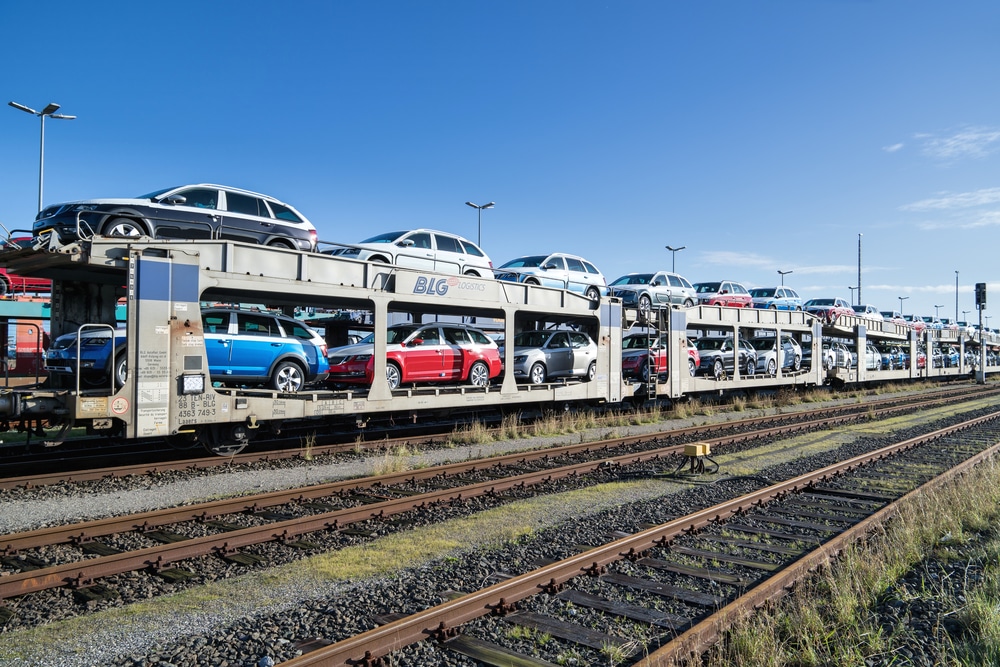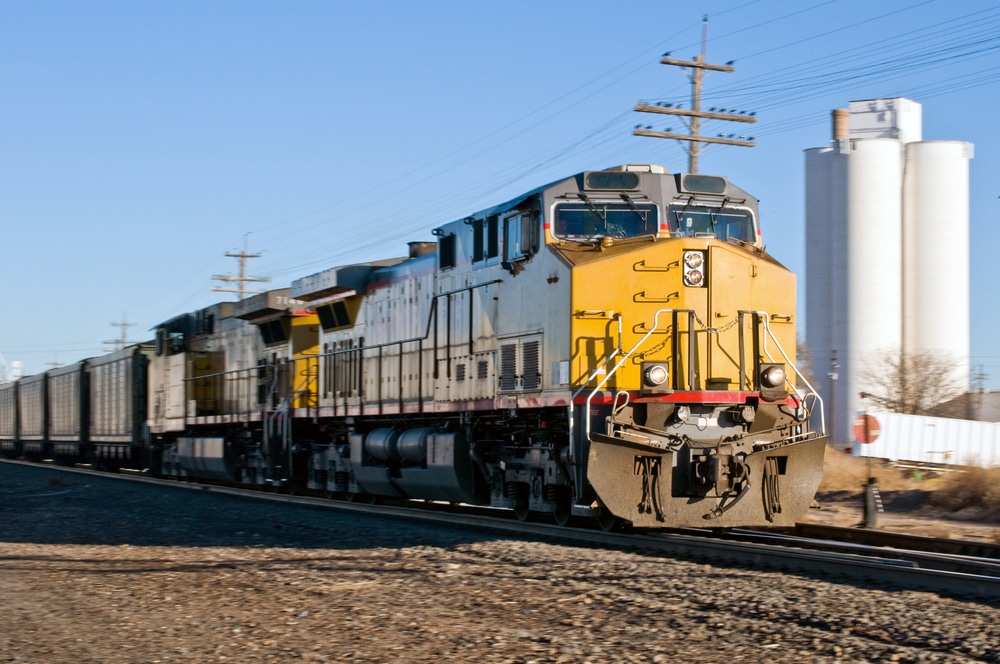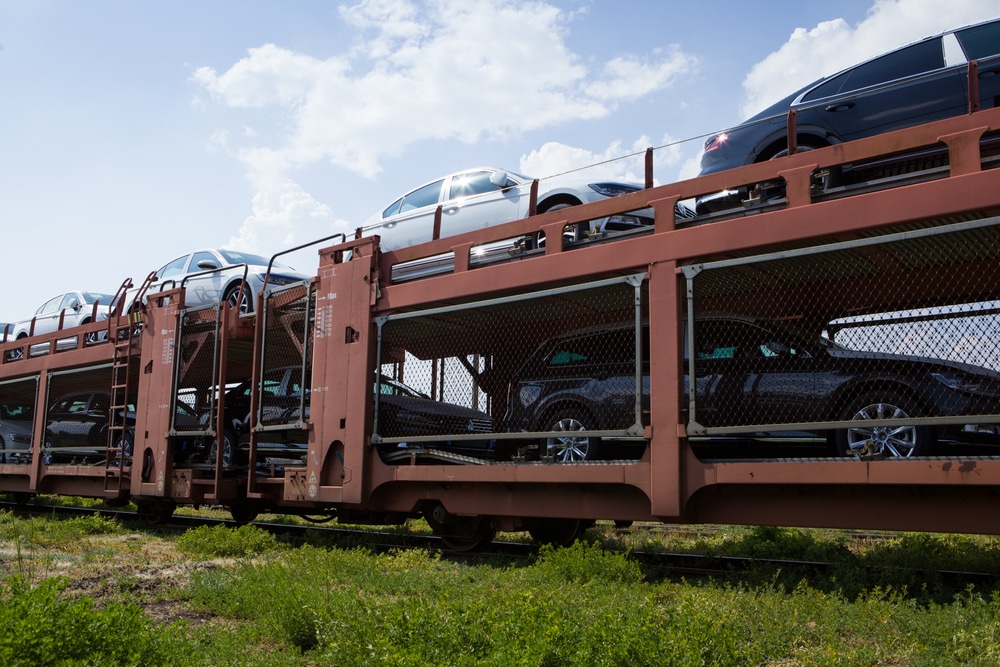How to ship a car across country by train
The car shipping industry is a big business. Most of it is conducted via ocean freight and land carriers, but there are other methods like air freight and rail transport.
The transport method of choice is dictated by two major factors: Where the car is going and How quickly it needs to get there.
The fastest method is always going to be air freight, however, it is the most expensive since planes can transport limited cargo. Ocean freight is mainly used to import/export vehicles to other countries. It is the slowest method, but it is the cheapest since it can transport hundreds of vehicles at once.
Admittedly, shipping a car across country by train is not the most popular method, but it does happen and has been making waves in the auto transport industry recently. It’s a cheaper method of transporting a car across country and can transport way more vehicles than a carrier truck.
If shipping a car by train has appealed to your needs, there are a few things you need to know before securing transport. In just a few minutes, you’ll learn if this is indeed the right transport method for you, and how you can make transporting a car by train simpler:
Does shipping a car across country by train make sense?
It depends. Generally, car shipping by train happens in bulk. This means that most, if not all vehicles, being transported belong to one customer. For this reason, most American railroad companies cater specifically to businesses, for example, car dealerships, shuttle/ride-sharing services, and collectors.
But, if you’re anywhere along Washington DC to Sanford, Florida, you’re in luck. Truthfully, most auto shipping companies that offer rail transport as one of their services do so with these limitations. More often than not, they’re working with Amtrak to make it happen.
How does it work?
Shipping a car by train is very similar to shipping a car by truck. It starts with securing a car transport company to handle the behind-the-scenes work and preparing your vehicle for pickup.
Cross Country Car Shipping is prepared to make things work once you give us a general idea of your needs. While rail transport may not be a viable option in all parts of the country, and for all needs, we work assiduously to accommodate each customer.
Like all shipping methods, we will require Vehicle registration and title, photo identification, insurance documentation, and a Bill of Lading to get this show on the road. You’ll also have to decide on a date or choose from the ones available. At this point, we’ll iron out all the details from the information given, and ask the customer to prepare the vehicle.
Preparing the vehicle means servicing to ensure everything is running and inspecting its condition. The customer is expected to leave all emergency tools/equipment behind, and turn off all alarms and GPS systems that can go off during transport. Removing personal belongings is optional since this option gives you the opportunity to transport a car with stuff inside.
Finally, a Bill of Lading must be drafted in the presence of the customer and the carrier as proof of the vehicle’s condition before departure. This entire process should take no more than an hour or two, after which the car is brought to the station/terminal for departure. Note that you can travel with the vehicle in passenger cars and arrive at the same time as your vehicle.
The overall transit time via train can be much lower than by carrier truck. Remember that trains sustain faster speeds than regular cars, and there are rarely barriers to transport, like traffic or motor vehicle incidents.
Another good thing about transporting a car by train is that the country’s extensive railroad system means that you can find a station fairly easily. So, it shouldn’t be much of a hassle for you to pick up your car at the closest station.
How much will transporting a car by train cost?
Usually, it costs less than transporting a car by truck carrier, or just about the same depending on the type of vehicle and the destination. The average cost of transporting a car by train is between $600 and $1000, while a truck or larger vehicle will cost an average of $800 and $1070.
You can pay as little as $500 to ship a car by Amtrak (inclusive of a passenger ticket). Compare that to the same distance over land and you’re looking at over $800.
How are rail transport fees determined?
Rail transport fees are determined in a similar way to the other methods.
Distance, of course, is a primary factor in determining auto transport fees. Typically, the longer the distance between the drop-off and pickup station, the more the customer will have to pay for fees. So, shipping a car across the country will be at the pricier end of the spectrum.
Another similar factor is the route taken for the shipment. Popular rain lines will be cheaper than ones used less often.
Larger vehicles will undoubtedly cost more to ship than standard-sized cars. If you have an inoperable vehicle, prepare to dig deeper in your pockets to compensate for the extra time and effort put into loading and unloading the car.
There’s also the shipment type to consider. We explain more about them below, but one is more affordable than the other. Enclosed rail transport will cost more than open-air transport.
We also have to factor in the season. High demand during late spring into the summer months will mean more competitive transport costs which can be higher than usual.
Similarly, off-season means lower demand. Off-peak costs are usually lower to incentivize customers. This also allows for greater flexibility when it comes to shipping dates.
Open-air vs enclosed rail transport
Like car shipping, you’ll have to choose between open-air and enclosed transport shipping. The concepts are pretty much the same.
Open-air transport means that the vehicles are transported in an open-style train car. In other words, the vehicles are exposed to the elements during transport. Note that this method is safe, and the only thing the owner will have to worry about is a bug or two in the wipers, and a dirty vehicle.
Open-air transport is the cheaper method since it allows more vehicles to be transported at the same time. Enclosed transport may be the only option allowed by the train, and vice versa.
Enclosed rail transport is most suitable for rare, luxury, classic, and collectible vehicles. These types of vehicles require extra protection, and should not be exposed to the elements for extended periods. If you require this peace of mind, prepare to dish out a few extra coins for this service.
Is door-to-door delivery still an option?
Yes, but it is going to cost you more. Since the train can’t come to your door, it will require a carrier to take it to your desired location. This can be a pricey service depending on where you’re located.
Customers tend to take advantage of the situation by collecting and dropping off their vehicles themselves to maximize savings.
What about discounts?
The car shipping company you choose will make you aware of any discounts associated with rail auto transport. Be mindful that since the carriers (trains) do not belong to the company, there is limited say over how much customers are charged. Most times, the company you choose will give you the best price based on the current rates.
Cross Country Car Shipping is pleased to announce some of the most competitive rates for rail auto transport in the country! Find out more by getting in touch with one of our representatives today.
Benefits of shipping a car by train
Most car shipping companies prioritize their carrier shipping services over train transport. However, there are several benefits that make this a favorable option for certain customers.

Extensive train lines
The American railway system is one of the largest and most interconnected in the world. While rail transport of vehicles is limited, the network allows for reliable transport to more locations along the tracks.
Though it also means the customer will have to make their way to a station, it is sometimes more accessible than a trucking terminal would have been.
Cheaper transport option
Like ocean freight, rail cars allow multiple vehicles to be transported at once, much more than an aircraft or truck carrier. The more vehicles the medium can carry the cheaper the overall cost.
These savings can be used elsewhere, especially for other aspects of the move that carry hefty charges.
Better for the environment
Shipping a car by train is much better for the environment than shipping by a truck carrier. The reasoning behind this is simple. A train transports more vehicles, among other things, than a truck carrier can at any one time, burning less fuel for similar routes. This means that a train has an overall lower carbon footprint.
There’s also the fact that customers can also be passengers aboard the train, and reduce their carbon footprint while moving.
Transporting personal belongings
The no-personal belongings rule is strictly enforced by auto carriers due to security and liability issues. However, on a train, you’re allowed to “pack your car like a suitcase” for the journey.
This ultimately means you save money on shipping these items to your next destination, and you’ll have everything with you when you arrive! Be careful not to overpack though, because you still want to be able to drive it home yourself to save even more money.
Arrival same time as the vehicle
The goal is always to make auto transport as convenient as possible, but it may mean making compromises to make it worthwhile. It’s not unusual for customers to arrive at their destination ahead of their vehicle, or have it shipped and stored until they get there.
Transporting a car via rail means you can arrive at the same time as the vehicle and make fewer compromises.
Making a decision
Ultimately, it’s up to you to decide if you want to go ahead with rail transport or truck carrier transport. Remember that though this method may be cheaper, it may not apply to all shipments, so be prepared to go with an alternative method of transport just in case.
Working with Cross Country Auto Shipping gives you the chance to maximize your savings without sacrificing quality. Get your free quote today, and work with a company that cares!


